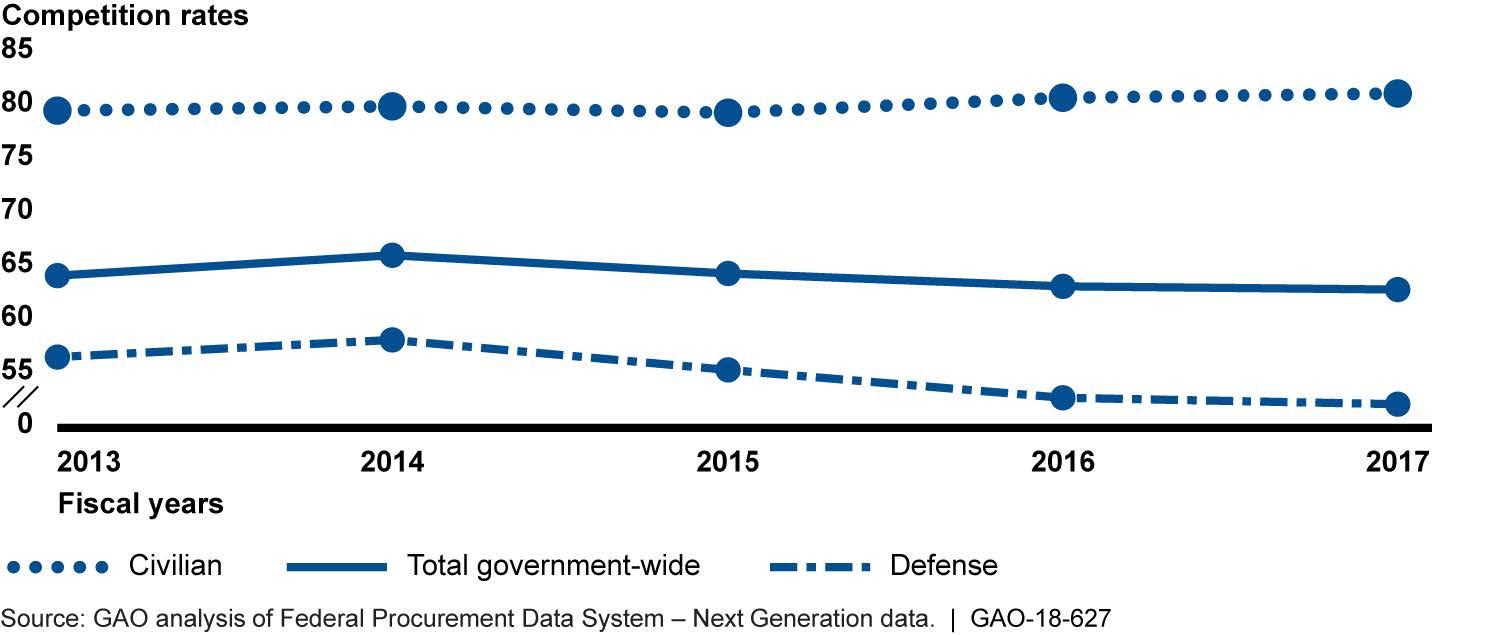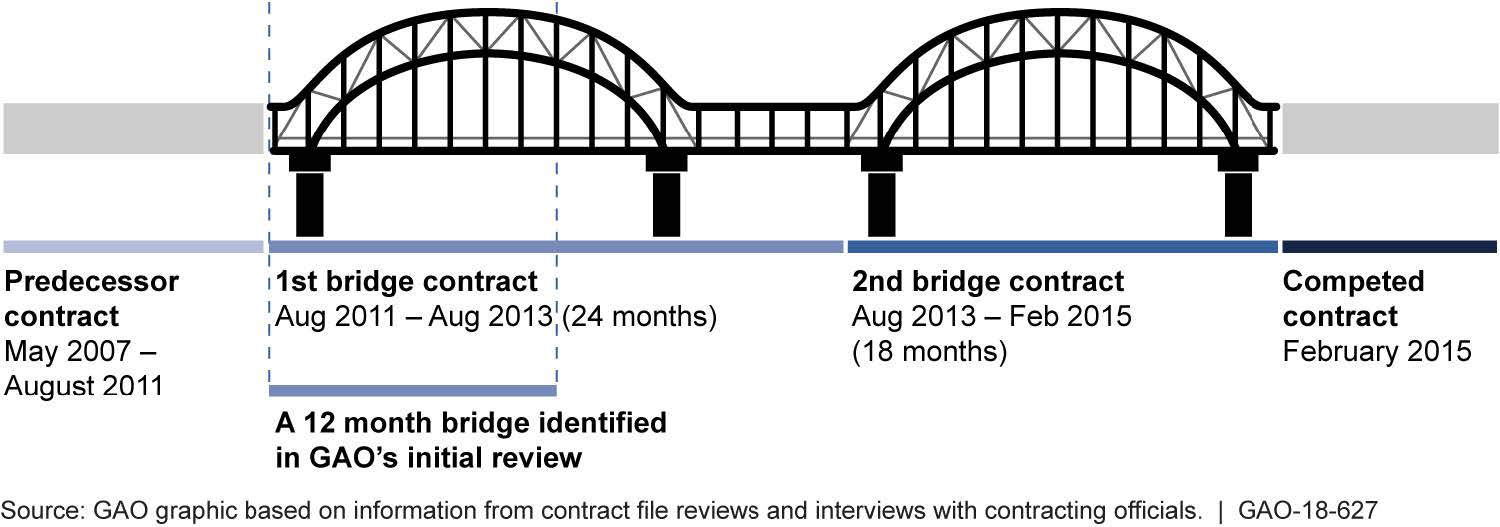Federal Acquisitions: Congress and the Executive Branch Have Taken Steps to Address Key Issues, but Challenges Endure
Fast Facts
In 2007, a congressional advisory panel identified a number of ways the government could buy goods and services more effectively and save money in the process. While Congress and the executive branch did a lot to address the panel’s recommendations, we found that some challenges endure over a decade later.
For example:
The use of competitive contracts to buy things, a practice that should lower prices, declined at the Defense Department. Across all of government, however, use remained about the same
Despite improvements in the acquisition workforce, finding workers with the technical knowledge for complex IT purchases is still difficult

This is a photo of the cover of chapter 1 of the Code of the Federal Acquisition Regulation.
Highlights
What GAO Found
Congress and the executive branch have taken numerous actions to address key issues the Acquisition Advisory Panel (Panel) identified in its 2007 report, but these actions have not eliminated some enduring challenges. The figure below presents the key issues the Panel addressed in relation to the life cycle of a typical contract as identified by GAO.
Figure: Key Issues the Acquisition Advisory Panel Raised, by Contracting Life Cycle Phase

Three of the key issues, and the corresponding challenges, align with specific phases in the contracting life cycle:
- Requirements Definition: The Panel found that fully identifying requirements before a contract is awarded is key to achieving the benefits of competition. GAO has found that unrealistic requirements have contributed to poor program outcomes at the Department of Defense (DOD), and that the Army's requirements development workforce decreased by 22 percent from 2008 to 2017.
- Competition and Pricing: The Panel said that competition can help reduce prices. GAO's work shows that competition rates have remained steady government-wide, and declined at DOD. See figure below.
Figure: Government-wide Competition Rates Compared to Civilian and Defense Agencies, Fiscal Years 2013-2017

GAO has also found that agencies are sometimes using bridge contracts—which GAO has generally defined as either extensions to existing contracts or new short-term, sole-source contracts—to avoid a lapse in service caused by delay of a follow-on contract award. In some instances, bridge contract awards delay opportunities for competition and can place the government at risk of paying higher prices for multiple years. The figure below depicts how an Army bridge contract for computer support services planned for 12 months was extended to 42 months.
Figure: Timeline for an Army Computer Support Services Contract

Further, GAO's work shows that agencies have not fully embraced initiatives and techniques intended to reduce the prices they pay, including consolidated purchasing approaches and robust market research.
- Contractor Oversight: The Panel raised questions about the capacity of federal agencies to oversee contractors. GAO has found that agencies continue to award contracts warranting increased management attention at a steady rate, such as contracts for management support services. With contracts like those for management support services, there is an increased risk that contractors may perform tasks reserved for the government. Additionally, GAO found that heavy workloads at the Department of Veterans Affairs have made it difficult for officials who oversee contractors to ensure contractors adhere to contract terms.
Three of the key issues, and the corresponding challenges, cut across all the phases of the contracting life cycle:
- Acquisition Workforce: The Panel found that the federal acquisition workforce faces workload and training challenges. GAO's work has shown that DOD has enhanced its workforce, but some workforce gaps endure at DOD and across agencies.
- Federal Procurement Data: The Panel found that the government's primary repository for acquisition data contained some unreliable data. Also, GAO has found that the system has demonstrated limitations. For example, guidance from the Office of Management Budget (OMB) required that agencies collect specific contract award data, but the system did not have the capability to do so.
- Small Business Participation: The Panel found a number of challenges hindering agencies' efforts to meet small business goals. GAO has found small business participation has increased, but many agencies are not in full compliance with requirements governing Offices of Small and Disadvantaged Business Utilization (OSDBUs). For example, the directors of these offices should report directly to agency heads or their deputies, but not all agencies have established this type of direct reporting relationship.
Why GAO Did This Study
In fiscal year 2017, federal agencies obligated more than $500 billion to acquire products and services. These products and services included military aircraft, information technology software, and maintenance services.
Amid this large spending, the federal government has taken steps to reform federal acquisitions, increase efficiencies, and improve results. For example, in the Services Acquisition Reform Act of 2003, Congress established the Acquisition Advisory Panel to review federal acquisition laws, regulations, and policies; and identify opportunities for improvement. The Panel issued its final report in 2007, addressing topics that span all three phases of the contracting life cycle identified by GAO: pre-contract award, contract award, and post-contract award.
GAO was asked to follow up on the Panel's report and identify progress made since 2007. This report identifies the actions the federal government has taken to address key issues raised in the Panel's report, and the challenges that remain. GAO reviewed documentation and interviewed personnel from federal agencies and the private sector. These personnel included staff from OMB that are responsible for federal procurement policy, as well as staff supporting a panel addressing DOD's acquisition regulations and processes, known as the Section 809 Panel. GAO also leveraged its large body of work on federal acquisitions.
Recommendations
GAO is not making any new recommendations in this report, but it has made numerous recommendations in the past. The agencies have agreed with many of GAO's recommendations, and have implemented some of them but not others. For example, GAO has made the following recommendations.
- The Army should assess the resources needed for the requirements development process. The Army agreed, but it has not yet done so.
- OMB should provide guidance for agencies to manage bridge contracts. OMB agreed and has drafted management guidance but has not yet finalized it.
- Certain federal agencies should take steps to document how they conduct market research. The agencies agreed and did so.
- The Department of Veterans Affairs should develop tools to help oversee contracts. The department agreed and did so.
- DOD should have issued an updated acquisition workforce plan in fiscal year 2016. DOD agreed and issued the plan.
- OMB should take steps to improve how agencies collect certain procurement data. OMB generally agreed, but has not yet addressed the recommendation.
- Certain federal agencies should take steps to comply with OSDBU-related requirements. Most agencies that provided comments agreed or partially agreed. Two agencies—the National Aeronautics and Space Administration, and the U.S. Agency for International Development—have addressed the recommendations.
GAO continues to believe the agencies should implement all of these recommendations.
